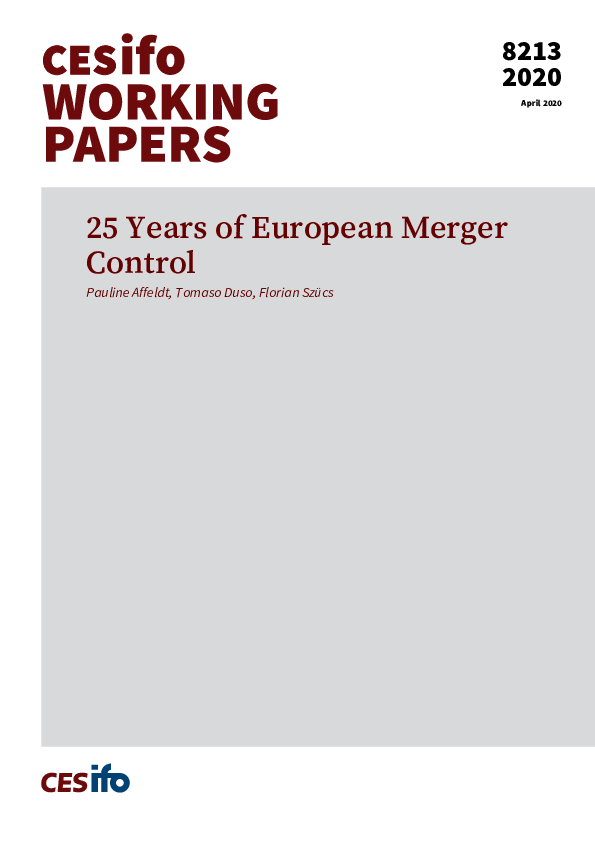25 Years of European Merger Control
CESifo, Munich, 2020
CESifo Working Paper No. 8213

We study the evolution of EC merger decisions over the first 25 years of common European merger policy. Using a novel dataset at the level of the relevant antitrust markets and containing all merger cases scrutinized by the Commission over the 1990-2014 period, we evaluate how consistently arguments related to structural market parameters – dominance, concentration, barriers to entry, and foreclosure – were applied over time and across different dimensions such as the geographic market definition and the complexity of the merger. Simple, linear probability models as usually applied in the literature overestimate on average the effects of the structural indicators. Using non-parametric machine learning techniques, we find that dominance is positively correlated with competitive concerns, especially in concentrated markets and in complex mergers. Yet, its importance has decreased over time and significantly following the 2004 merger policy reform. The Commission’s competitive concerns are also correlated with concentration and the more so, the higher the entry barriers and the risks of foreclosure. These patterns are not changing over time. The role of the structural indicators in explaining competitive concerns does not change depending on the geographic market definition.
Industrial Organisation